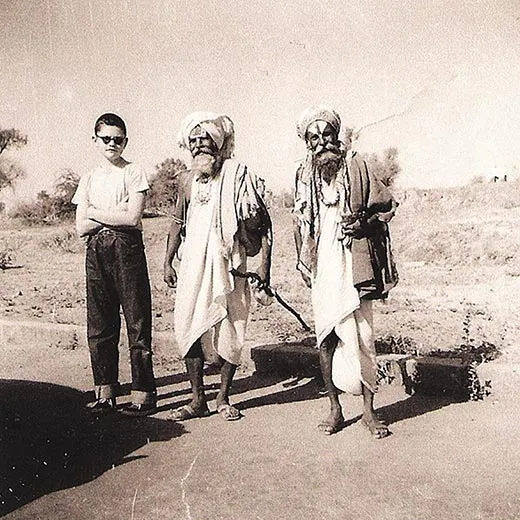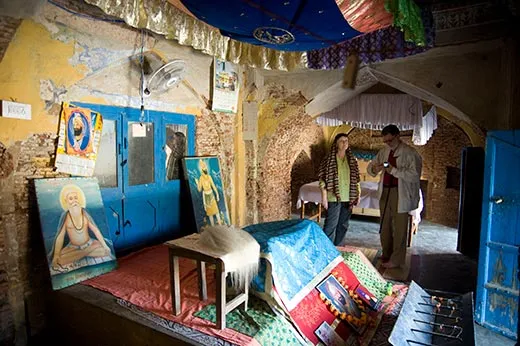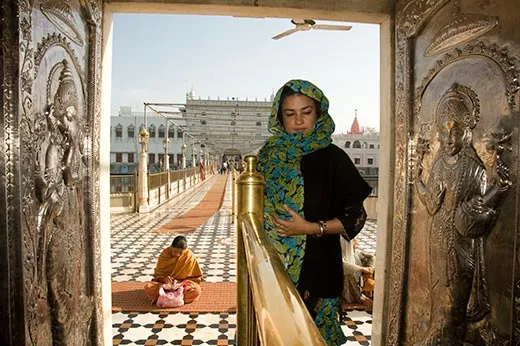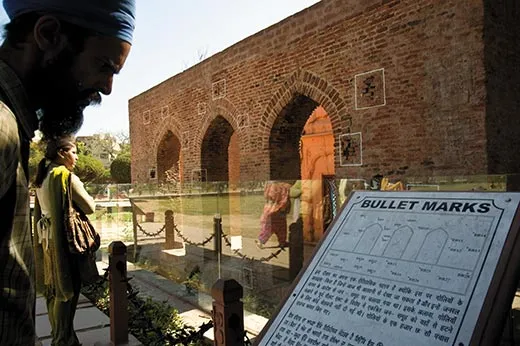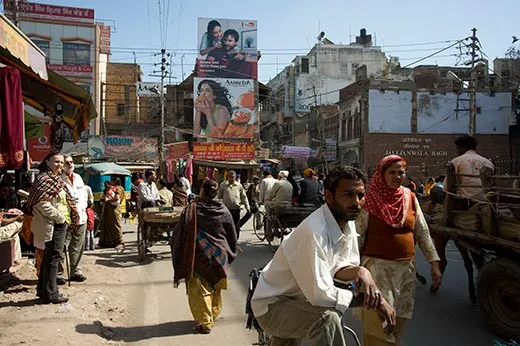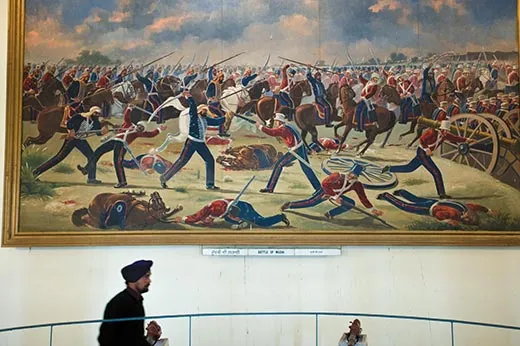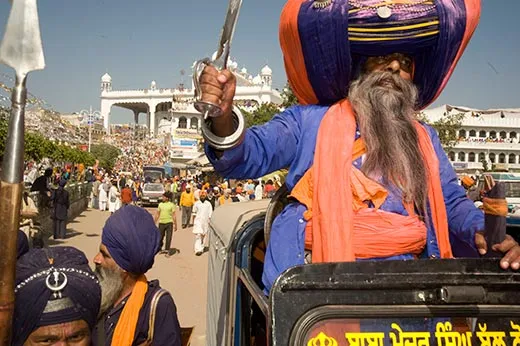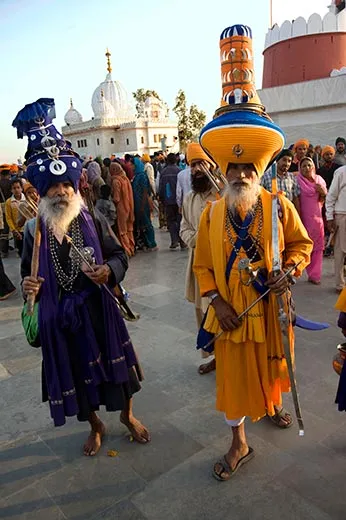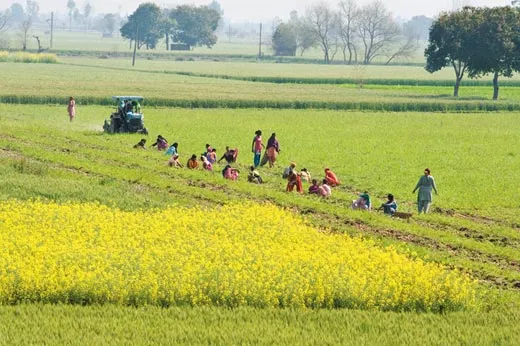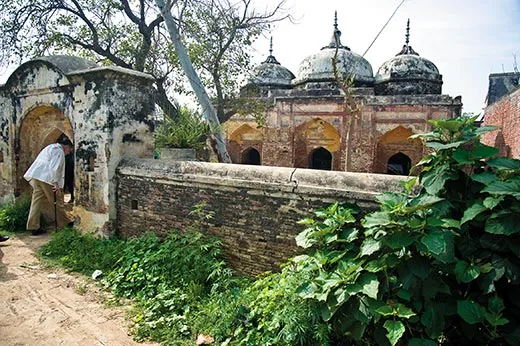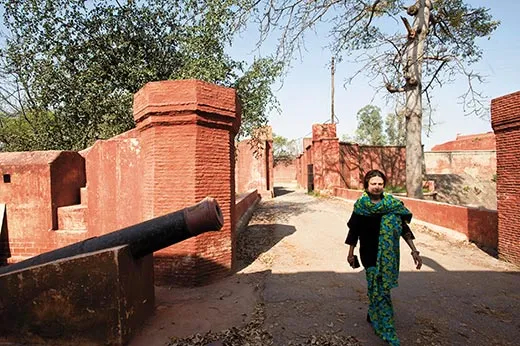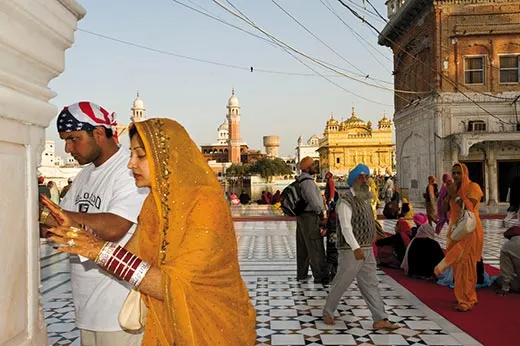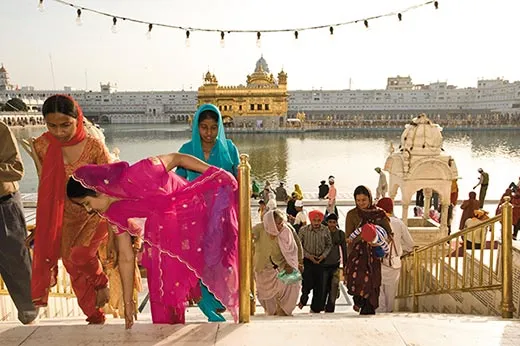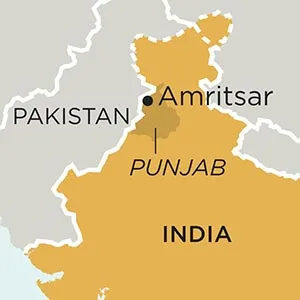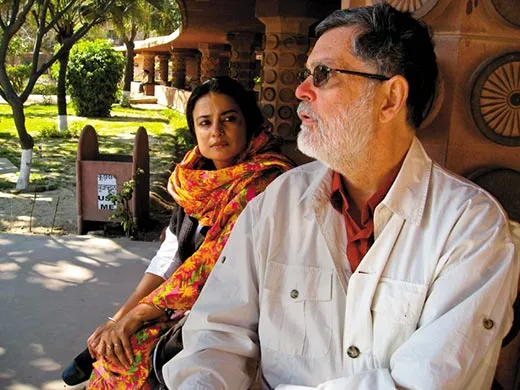Saving Punjab
A Sikh architect is helping to preserve cultural sites in the north Indian state still haunted by 1947’s heart-wrenching Partition
/https://tf-cmsv2-smithsonianmag-media.s3.amazonaws.com/filer/Golden-Temple-in-Arritsar-Holy-City-of-the-Sikhs-631.jpg)
My wife says I suffer from an "India problem." She's right. I lived in New Delhi as a teenager during the 1950s, came home to college at 18 and managed to stay away from India for a quarter of a century. But over the past 26 years I've been back more than 20 times, sometimes with a legitimate excuse—an assignment from one magazine or another—but mostly because I now can't imagine life without a regular dose of the sights and sounds and smells I first knew as a boy, can't bear not seeing the friends I've made there.
When the editors of Smithsonian asked me to pick a place I'd always wanted to see, it took about ten minutes to settle on Punjab, the north Indian state that was brutally halved between India and Pakistan after they won their independence from Britain in 1947. The Delhi I knew growing up—my father was stationed there, working for the Ford Foundation—had only recently been transformed into a largely Punjabi city by the influx of more than 400,000 Hindu and Sikh refugees, all of them haunted by bitter memories of the violence of Partition that had forced more than ten million people from their homes on both sides of the border and may have cost a million lives. Virtually everyone I knew had memories of Punjab. The tutor who struggled to teach me high-school math had stumbled across much of it on foot. His elderly mother, whose gently spiced samosas I can still taste, somehow made it, too. My two closest boyhood friends were Sikhs whose poultry farm on the outskirts of Old Delhi adjoined a sprawling tent city still crowded with Punjabis awaiting new homes seven years after they'd been forced from their old ones.
I'd always wanted to see something of the world they'd left behind. I'd had glimpses: I hunted in those bad old days, so my friends and I sometimes strayed across Punjab's border in search of game. But I'd never been to Amritsar, the city that is to Sikhs what Mecca is to Muslims, Varanasi is to Hindus, Jerusalem is to Jews and Rome is to Catholics. Nor had I seen the lush countryside around it where some of the most appalling violence of Partition took place and where relics of Punjab's history lie scattered everywhere.
Two people who know the region well agreed to accompany me, the photographer Raghu Rai and his wife, Gurmeet, herself a Sikh and also a conservation architect consumed by a desire to help save all that she can of Punjab's historical heritage. They, too, are haunted by Partition. Raghu was a small boy in 1947, living in the village of Jhang in what is now Pakistan, but he still remembers fleeing with his family out the back of their house as an angry Muslim mob banged on the front door. Gurmeet, too young to have firsthand memories of the division of India, comes from a clan that includes both Sikhs who fled from Pakistan and Muslims who stayed behind. When she returned to Delhi from a visit across the border to her family's ancestral village in 2000, she recalled, "It was a homecoming from a place which felt quite like home."
The Grand Trunk Road runs for 1,500 miles from Kolkata on India's eastern coast all the way to Peshawar on Pakistan's western edge. A 170-mile section of the ancient trade route—now designated National Highway Number One—cuts diagonally across the Indian Punjab. "Truly," Rudyard Kipling wrote in Kim, "the Grand Trunk Road is a wonderful spectacle....bearing without crowding...such a river of life as exists nowhere else in the world." That river flows far faster now and is no longer uncrowded. Kim and his contemporaries moved mostly on foot; the fastest travelers rode in horse carts. Now, big gaudily painted trucks race past one another in both directions, blaring horns and spewing black exhaust. Motorcyclists weave among them, wives and small children clinging on behind. Bicycles and sputtering motor-rickshaws join the flow; so do jeeps that act as country taxis and spavined buses so oversold that a dozen or more men ride with the baggage on the roof.
The brilliant green of the countryside through which all this traffic elbows its way is broken only by the trees that set one wheat field apart from the next and by occasional patches of brilliant yellow mustard. Punjab is the heartland of the Green Revolution that turned India from a country that could not feed its people into an exporter of grain.
Gurmeet knows nearly every inch of this highway. As a young architect, she spent a season in 1993 with the U.S. National Park Service, helping to survey historic structures along the C & O Canal between Harpers Ferry, West Virginia, and Washington, D.C. After she returned to India, she persuaded a number of funders, including Unesco and the Indian National Trust for Art and Cultural Heritage (INTACH), to let her lead a team that would create a similar inventory of all the unprotected monuments along the Grand Trunk Road in Punjab. Nothing like it had been attempted before.
It's not easy to tell old from new in India. For most historic structures, there are no laws to prevent damaging alterations or outright demolition. Nonetheless, Gurmeet and her team managed to identify and document some 1,100 historically or architecturally significant structures along the Punjabi stretch of the ancient highway. Their list includes everything from the former palaces of feudal rulers to the rock-hewn wells that once served their tenants; from Hindu temples and Sikh gurdwaras and Christian churches bustling with believers to the lonely roadside tombs of Muslim saints, left behind by those who fled to Pakistan but still visited weekly by Sikh and Hindu farmers in search of miracles. All but a handful of Gurmeet's discoveries are deteriorating and unprotected. To an outsider, the task of rescuing more than a fraction of them seems almost insurmountable. Gurmeet just smiles. "Let's see," she says.
No city in the Indian Punjab has witnessed more history or is home to more historic sites than Amritsar. Its name combines the Sanskrit words for the sacred nectar of life (amrita) and for lake (sarovar), a reference to the pool within the precincts of the Golden Temple of the Sikhs that is believed to wash away sins. But at first glance, there's nothing celestial about it. The narrow streets are clamorous, dusty, claustrophobic. Home to more than a million people, Amritsar has long since spilled beyond the walls that once defined its borders, and even in the city's oldest sections, most buildings are drab, run-down and recent.
The Golden Temple, however, is a revelation. Sikh men are identifiable by the turbans and beards their faith requires the orthodox to wear, but their distinctive theology and remarkable history remain little known beyond India's borders. Their most sacred shrine embodies both. We joined a stream of chattering pilgrims and, with covered heads and bare feet, stepped through the main gateway—and into another world. The cacophony of the city fell away. The waters of the broad sacred pool mirrored a brilliant sky. The sun gleamed on the white marble cloister that surrounds the pool and burned so brightly on the temple built on the island in its center that it seemed almost aflame.
The pilgrims around us fell silent. Some shut their eyes and folded their hands. Others fell to their knees and touched their foreheads to the ground. The complex is built at a level lower than the surrounding streets so that poor and high-born worshipers alike are forced to humble themselves by climbing down into it. Gateways on all four sides are meant to welcome people of all castes and creeds. Volunteers cook and serve thousands of free meals for pilgrims each day and insist that those who eat them do so side by side. "There are no foes nor strangers," says Sikh scripture, "for we are all fellow beings."
No one gawks here. No one demands money. Everyone seems content simply to be present in this holiest of places. The pilgrims make their slow, reverent clockwise way around the marble platform that edges the pool, past an old man with a white beard reaching nearly to his waist who gently lifts his infant grandson in and out of the sacred waters; a young mother on her knees patiently teaching her little girl the proper way to prostrate herself; a cleanshaven American Sikh, his head covered with a stars-and-stripes handkerchief, praying alongside his brand-new bride, her wrists hidden by bright red bridal bangles.
The goal of every visitor is to follow the causeway that leads out to the gilded sanctum sanctorum and pay respects to the Guru Granth Sahib, the sacred book that is the sole object of Sikh veneration and was first installed there in 1604. Nanak, the first of the Sikh gurus (or "great teachers") whose thoughts are contained within its pages, was a 15th-century mystic with a simple message: "There is but One God. He is all that is." In the search for salvation, the only thing that matters is meditation on his name. "There is no Hindu," he said, "there is no Mussulman."
Whether or not Nanak ever meant to found a religion, Sikhs believe he did. And this place, where his teachings and those of four of his nine successors were brought together by the fifth guru, has special meaning for them. "It is, quite simply, the core of their...being," the Sikh historian Patwant Singh has written. "It represents so many things they are immensely proud of: the vision of their gurus who gave it form and wrote the scriptures on the banks of the sacred waters; the courage of their forebears who died defending it; and the devotion with which others laid their abundant wealth before it in gratitude for the inspiration it has provided...over the centuries."
That inspiration has been sorely needed. Always outnumbered, even in their Punjabi stronghold, the Sikhs have frequently found themselves under attack. They've never failed to fight back, against the Moguls who tried to exterminate them in the 17th century, the Afghans who razed the Golden Temple three times between 1748 and 1768 and the British who by 1849 had destroyed the sprawling 19th-century empire carved out by their ablest chieftain, Ranjit Singh. Later, Sikhs served out of all proportion to their numbers in the armed forces of independent India.
But the issue of Sikh autonomy has never fully been resolved. During the 1980s, bitter, sometimes bloody quarrels between the Indian government and elements of the Sikh community led to something like a civil war. In June of 1984, Prime Minister Indira Gandhi ordered a military assault against armed militants holed up within the Golden Temple complex. It killed several hundred Sikhs, many of them innocent pilgrims, and left the sacred structure badly damaged. Just five months later, two of Mrs. Gandhi's own Sikh bodyguards avenged that assault by assassinating her as she walked through her garden in New Delhi. Hindu mobs, egged on by politicians belonging to the late prime minister's Congress Party, then avenged that killing by butchering some 3,000 Sikhs in the streets of Delhi. More than a decade of sporadic violence followed before relative peace returned to the Punjabi countryside. But resentments remain: calendars featuring romanticized depictions of Sikhs killed during the conflict are for sale in every bazaar, and as we drove away from the temple, a cycle rickshaw crossed in front of us with flattering portraits of Mrs. Gandhi's assassins stenciled on its back.
As we negotiated Amritsar traffic, Gurmeet's iPhone rarely stopped ringing. She now heads the Cultural Resource Conservation Initiative (CRCI), a multidisciplinary conservation consultancy with projects all over the country, but it is preserving the relics of Sikh history that means the most to her. We rounded a traffic circle marked by a battered Patton tank captured from Pakistan by a Sikh regiment and pulled up at a little guard post. Two watchmen peered curiously into the car window, recognized Gurmeet and waved us through. We were about to enter Gobindgarh, a 43-acre, 18th-century Sikh fortress with four mountainous bastions and a broad moat choked with trees. Ranjit Singh stored some of his vast treasure within its walls. The British Army occupied it. So did the army of free India, which in 2006 turned it over to the state of Punjab. It is not yet open to the general public, but in the middle of the old parade ground craftsmen are mixing traditional lime mortar in a circular pit. Under the CRCI's direction they are shoring up the mammoth brick tower in which Ranjit Singh lived when visiting the holy city. Gurmeet has stopped by to make sure the color of the lime is right. But she has bigger plans, as well. There are rumors that an American-based hotelier plans to turn the fort into a luxury hotel for overseas Punjabis interested in revisiting the shrines of their faith without more than minimal contact with the real India. If he succeeds, she fears ordinary citizens will be kept out of this precious relic of their history.
'"Freezing buildings in time may not work here the way it does in the West," Gurmeet says. "There are too many pressures for change. But turning everything into tourist hotels won't work either. Our historic buildings need to mean something to the people who live around them. We need to involve them in our work, to make them understand its importance." To achieve those ends she hopes to undertake an overall management plan that would both provide for world-class preservation and supply visitors with the interpretive materials they need to understand monuments like this. (Since our visit, Gurmeet has been given the go-ahead by the Punjab government.)
That understanding has largely been missing in Punjab. In recent years, for example, Sikh congregations have been "improving" historic structures by bulldozing them and then constructing ever-more-lavish substitutes on the sites. "Somewhere along the line the original, unpretentious Sikh architecture has begun to be perceived as something to be ashamed of," Gurmeet says. "Our gurus were simple, down-to-earth men of the soil, and their buildings reflect the simplicity and harmony Sikhism is all about."
Wagah marks the western end of the Indian portion of the Grand Trunk Road. It is the sole crossing point between the two Punjabs; Lahore, the capital of Ranjit Singh's Sikh kingdom and of pre-Partition united Punjab, is just 18 miles up the road. The formal flag-lowering ceremony that takes place at Wagah at dusk every evening of the year must be one of the oddest regularly scheduled events on earth. On the evening we visited, hundreds of eager onlookers streamed into specially built grandstands in the coppery light. On the Indian side, a big amiable crowd jostled one another for the best seats, men, women and children sitting together. In the roadbed, several busloads of teenage girls in brightly colored salwar kameez danced to recorded bhangra music. On the Pakistani side, a giant portrait of Mohammed Ali Jinnah, the founding father whom Pakistanis call their Quaid-i-Azam, or "Great Leader," looked down upon stadium seats in which men and women sat carefully segregated: men and boys on the left side of the road; girls and women (a handful in full-length burqas) on the right. Instead of dancing schoolgirls, three gray-bearded mullahs in green and white raced back and forth, waving huge Pakistani flags to whip up enthusiasm.
The ceremony itself proved both impressive and ludicrous. As the spectators cheered and chanted "Long Live India" or "Long Live Pakistan," squads of uniformed Punjabis from both sides of the border, picked for their height and fierce good looks and wearing turbans with starched coxcombs that made them look still taller, quick-marched toward one another till they stood only a foot or two apart. Then, they stamped and whirled, puffed out their chests and flared their nostrils in perfect military unison, each apparently seeking to out-testosterone his opposite number before hauling down their flags. I asked the major in charge of the Indian contingent how seriously his men took their nightly confrontation with their neighbors. He laughed. "We've been doing this for more than 20 years," he said. "We know each other's names. It's all for the audience."
It was the muted reaction of that audience that fascinated me. The region around Wagah had witnessed some of the worst Partition bloodletting. Since then, India and Pakistan have gone to war three times. A few weeks before my visit, fanatics trained in Pakistan had butchered more than 160 people in Mumbai. The people who had turned out to watch the ceremony this evening had grown hoarse shouting patriotic slogans. And yet when the flags were finally folded away and the big gates clanged shut, spectators on both sides drifted as close to the dividing line as the respective armies would allow, peering silently across the no man's land into the faces of counterparts who looked so much like themselves.
Most of the monuments we'd seen testified to Punjab's bloody past: battlefield markers; crumbling village walls built to bar marauders; gurdwaras that honor Sikhs martyred in battle against the Moguls; and Jallianwalla Bagh, the Amritsar park now filled with flowers and shouting schoolchildren, where, in 1919, a British commander ordered his men to fire upon unarmed civilians—killing at least 379 and galvanizing the independence movement.
But there are also sites that still evoke the mutual respect that characterized life for many Punjabis before the tragedy of Partition. Gurmeet led us to one of the most unlikely of them, the Guru ki Maseet, or "Guru's Mosque," in the old walled town of Sri Hargobindpur, west of Amritsar. Here, on a bluff overlooking the Beas River, a member of the Nihang Sikh order, justly celebrated for the ferocity with which it defended the faith against its enemies in the old days, stands lonely guard over a Muslim house of worship. His name is Baba Balwant Singh and he has been on duty here for more than a quarter of a century. The shrine he protects is a modest three-domed brick structure, barely 20 feet deep, with arched entryways so low that anyone much over five feet tall must duck to enter. But it has a truly extraordinary history.
Sri Hargobindpur is named for Hargobind, the sixth Sikh guru, who, according to tradition, ordered his followers to make a city of "unmatched beauty" so that "those who inhabit the town [should] be free of sorrow." Those who inhabited it included Hindus and Muslims as well as Sikhs, and so, to ensure tranquillity, the guru made sure that adherents of all three faiths had their own houses of worship. But sorrow eventually came to Sri Hargobindpur in any case: Partition forced every single resident of its Muslim quarter to flee to Pakistan. Hindu and Sikh refugees took over the homes they left behind. Elsewhere, abandoned mosques were transformed into shelters for people or livestock—or demolished altogether.
But this mosque's unique origin made such actions unthinkable. "Nobody can damage this maseet," the leader of the Tarna Dal band of Nihangs declared. "This maseet was established by our guru. If anyone tries to damage it, we will kill him." His followers reverently placed a copy of the Granth Sahib inside the building and set up a 50-foot flagpole bound in blue cloth and topped with a double-edged sword; it let the world know the mosque would henceforth be under their protection.
The man who still guards it, Baba Balwant Singh, is a formidable figure in the lofty dark blue turban and blue robes of his order but is reluctant to talk about himself. If he does, he says, his ego might get in the way of his relationship with God. He dragged two string beds into the sunshine for his guests to sit upon.
Gurmeet explained she had come upon him and his mosque almost by accident in 1997. She had happened to climb onto the roof of a nearby gurdwara to get an overview of the town when she spotted a trio of little domes. The mosque was in bad shape. The little compound that surrounded it was overgrown.
Gurmeet saw a rare opportunity to work with the local community to restore a place venerated by two often-warring faiths. With funds and volunteers from a United Nations-sponsored project called Culture of Peace, and additional funds from the U.S.-based Sikh Foundation, she and her colleagues set to work. They trained local laborers to make repairs, visited schools to make children understand what was happening to their town, invited townspeople to see the work for themselves. But no Muslims were involved —there were still none in Sri Hargobindpur—and activists began to charge that yet another Muslim shrine was being usurped by unbelievers. It looked as though religious politics might destroy even this community-based project.
As Gurmeet talked, crows bickered on the compound wall. Children called from neighboring roofs. A buffalo bawled. Baba Balwant began preparing for us a special drink made only by the members of his order. Using a big stone mortar and wielding a three-foot-long pestle hacked from a tree, he smashed almonds, cardamon seeds, peppercorns and other ingredients into a paste. He deliberately left one element out of the recipe: the narcotic bhang that Nihangs reserve only for themselves. He folded the paste into a bright orange cloth and began dunking it into a steel bowl filled with a mixture of well water and milk from the noisy buffalo, then wringing it out.
It took months of negotiating, Gurmeet continued, to reach an agreement between the Nihangs and the religious endowment that holds legal title to all Muslim property abandoned in 1947. Under its provisions, the Nihangs would continue to protect the building as their guru would have wished, but the structure would also remain a mosque—as the guru had also intended. After the signing, a band of blue-clad Nihangs sat respectfully by as the chief imam of the Jama Masjid mosque in Amritsar led a delegation of Muslim dignitaries through their evening prayers. After 55 years the Guru ki Maseet was once again a house of Muslim worship.
Baba Balwant gave his bag of spices one final squeeze, then poured the liquid into big steel tumblers and handed them out to his guests. It was white and almond-flavored, cold and delicious. We said so. "It is good," he said with a pleased grin, "but if I had put in the secret ingredient, then you could touch the sky!"
I asked Gurmeet how she could have spent so much time and effort working to preserve such a modest building in such a remote location when so many apparently more important structures needed to be preserved.
"It's not the building," she says. "It's the idea of the building, a shared sacred space."
Before leaving Punjab, Gurmeet took us back to the Pakistan border once more, just outside the village of Dera Baba Nanak, where, between two guard towers, a Sikh regiment of the Indian Border Security Force has constructed a brick platform from which the faithful can look across the border into Pakistan and see, shimmering on the horizon, the white domes of one of the most sacred of all Sikh gurdwaras, Sri Kartarpur Sahib. It marks the spot where Guru Nanak spent 15 years preaching to his first disciples, and where he died in 1539. As he lay dying, according to one tradition, Muslim and Hindu followers began to quarrel over what was to be done with his body. Muslims believed it must be buried. Hindus were equally sure it had to be cremated. Nanak told each faction to place flowers at his side and leave him for the night. If the Hindus' flowers were freshest in the morning, he said, his body should be burned; if the Muslims' flowers were brightest he would be buried. Then, he covered himself with a sheet. In the morning, both offerings were as fresh as when they'd first been cut. But when the sheet was removed Nanak's body had vanished. His followers cut the makeshift shroud in half. One piece was buried and the spot marked with a tomb; the other was burned and the site of the cremation indicated by a stone cenotaph.
As we started back down the flight of steps, a Sikh family was just starting up them, a young couple and their little boy, all three eager for even a distant glimpse of the place where their faith was founded and where its greatest teacher tried to demonstrate that in the struggle for salvation all Punjabis—and, by extension, all mankind—are one.
Geoffrey C. Ward is a historian who travels frequently to India. Magnum photographer Raghu Rai lives in Delhi.
Planning Your Next Trip?
Explore great travel deals
Smithsonian magazine participates in affiliate link advertising programs. If you purchase an item through these links, we receive a commission.

